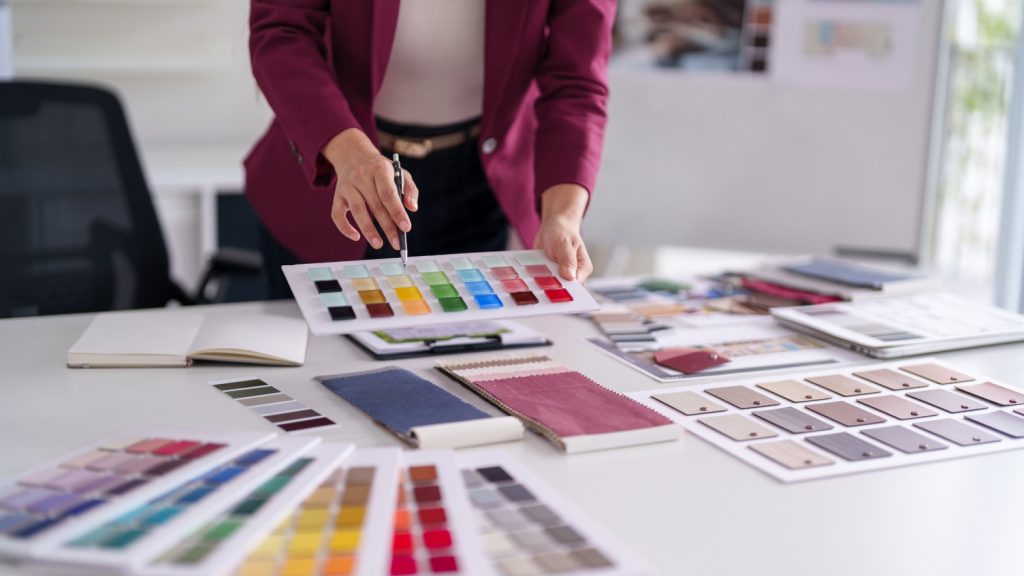There is something fascinating about colors, isn’t there? Their contrasts can be so delightful that it feels as if the colors themselves are singing a harmonious melody. While what works as a contrast can sometimes be subjective, there is still a place for objectivity. That is why, in this article, we are going to introduce a simple color-format formula that can help you choose Perfect Colors for your space.
1. Do Not Change What Can’t Be Changed
In every room, there is something that cannot be changed — or at least, not without a significant cost. Often, these are elements like tile, stone, cabinetry, stained glass, or flooring. It is best if you go for something that matches what you cannot change. Let’s say your kitchen has dark brown cabinets, and changing them would cost a lot of money. Instead of picking wall colors that might look weird with the brown, you choose colors like light cream or soft green that look good with it. This way, the cabinets feel like they belong, because we picked Perfect Colors for your space that looks nice together.
2. The Importance of Dominant Shade
There is always one color that leads a room. It can make up to 50 percent of the space as the dominant shade. It could be blue, white, black, beige, or any other color — but one must take the lead.
For example, renowned designer Kelly Wearstler often uses white as the anchor color. Sometimes it’s crisp and bright, other times muted and warm, yet it always offers depth and variation. This primary color creates balance and sets the tone for every other element in the room.
The lead color doesn’t have to yell at the people who see it. It can be gentle, like a soft whisper. A room doesn’t always need a bright or loud shade to look good. Even a calm color like light grey, cream, or pale blue can take the lead and make the whole space feel cozy and balanced. When the main color is quiet, other colors, furniture and décor get a chance to shine. The room feels peaceful and friendly, not overwhelming. Sometimes the softest color is the one that brings everything together in the best way.
3. The Beauty Sometimes Is in Complexity
As soon as you pick the main color, that is where the real fun begins. The devil is in the details, and the more thoughtful color choices you add to the room, the more seductive the art of design becomes. For instance, if your dominant shade is blue, adding navy-colored pillows, a sky-blue rug, or a dusty-blue vase can be a sight for sore eyes. You are still working within the same family of colors here, but each shade brings its own personality. It keeps the room from feeling flat or boring.
You can also introduce small pops of contrast such as gold handles, patterned cushions, or green plants to add depth to the overall look. Think of it like spices in a meal; too much can overpower everything, but the right amount makes it delicious. Color follows the same logic. A strong base and a few smart variations can do wonders.
4. A Final Brushstroke with Accents
Think of accents like subtle final strokes in an art piece. They are not what create the entire image, but they still stand out and enhance it. Accent colors are often what people notice first. They are usually bright or deep and appear in key places such as throw blankets, a feature chair, or artwork. You have to use them thoughtfully. For instance, pick one or two accent colors that complement your main palette. When used in the right spots, these colors can bring energy, personality, and a focal point to the whole room. They keep the design exciting without making it look chaotic.
Conclusion
Colors have the power to change how a room or space feels to people. Depending on the choices, it can feel warm, calm, bold, or joyful. By respecting what cannot be changed, choosing one color to take the lead, playing with variations, and adding just the right accents, a designer can create a room that looks well-designed and beautifully balanced.
If you want to become a professional designer who makes great color choices, all you have to do is join KIFT Fashion College’s Interior Design program.


